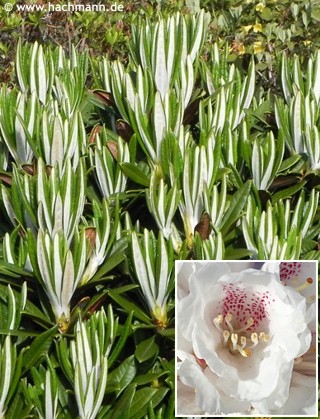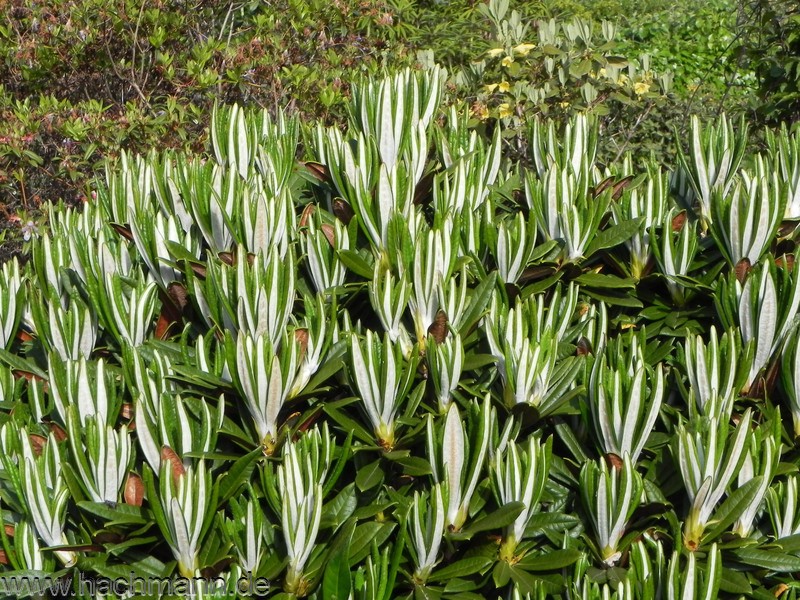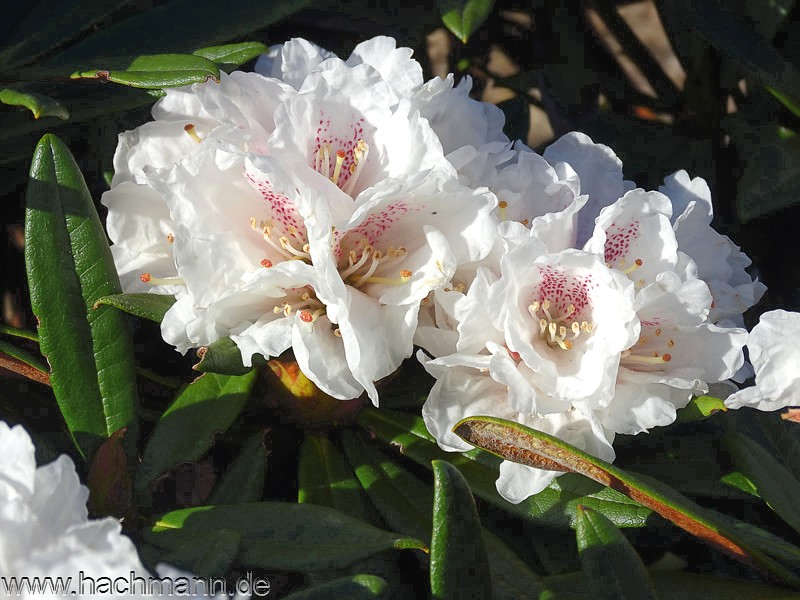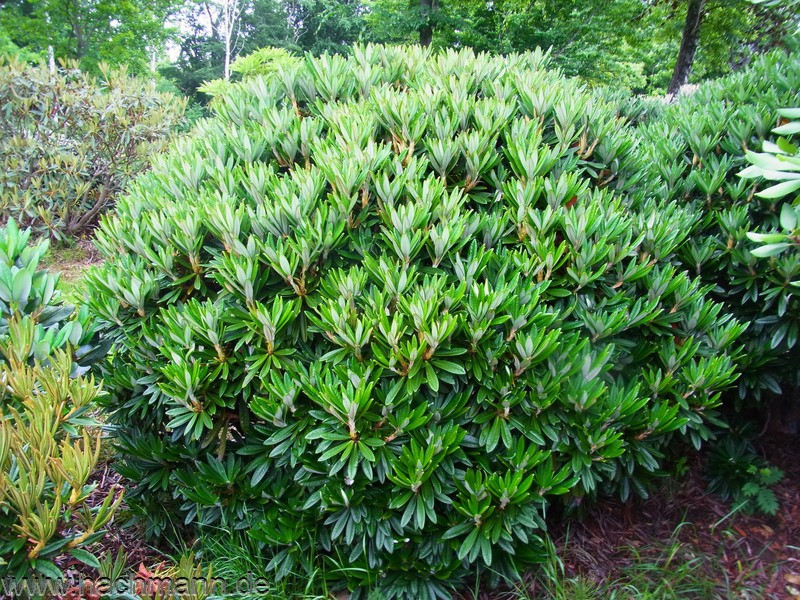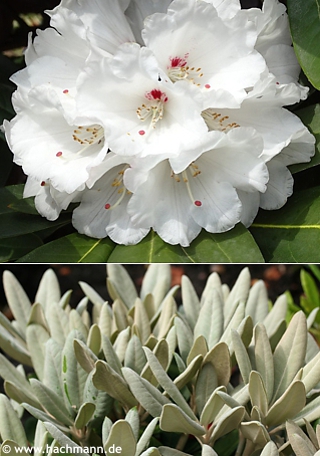Rhododendron 'STICKY DANE' rhododendron
Rhododendron
Rhododendrons are reliable, beautifully flowering, evergreen shrubs of variable origin: S.W. China, Himalayas, Northern America, and even Europe. The original species were hybridized several times for better performance so in the 1950´s there were more than 10,000 cultivars registered, and the number keeps increasing.
Sticky Dane is an extraordinary rhododendron from the Dane series from Denmark. This variety was propagated by Hachmann Nurseries in 1999, and developed by Danish botanist and rhododendron enthusiast Svend Hansen from seeds of r.roxieanum ssp. globigerum collected in Chinese province Yunnan in 1994. It produces snow white flowers with gentle dotting of rich red colour, but blooming is rather scarce.
Sticky Dane is a collectible item due to its foliage rather than flowers because the leaves are simply irresistible if you like evergreen plants. They emerge light green and strictly upright with inwardly curved margins revealing almost white indumentum of their reverse. They are evergreen and sticky, hence its name, and mature to dark green and very glossy as if covered with sugar icing. The plant grows slowly into a uniform and dense shrub only some 40 cm tall and wide in 10 years.
The Dane series of rhododendron so far includes these varieties: Best Dane, Debbie Dane, Chocolate Dane, Rusty Dane, White Dane, Sticky Dane, Birck's Dane, Silver Dane, Great Dane, Needle Dane, and Wooly Dane (as of 2022). They are developed by Danish botanists and rhododendron lovers Svend Hansen and Jens Christian Birck. Svend during his trips to Yunnan, Setchuan and Nepal collected many seeds of wild-growing species, which enchanted him mainly due to their unusually shaped or colored leaves. In the southeastern part of the Himalayas, he often climbed up to an altitude of 5,000 meters, where few people went to, and he was convinced that thanks to the challenging climate the plants raised from the seeds collected there would thrive also in most parts of Europe. He closely observed their behavior and growing conditions, and as he is not only a botanist and collector, but also a nurseryman and seller, he understands that his plants must also meet strict criteria for amateur cultivation. Dane rhododendrons are therefore not only pretty and unique things, but they are also reliable and hardy.
For a better-looking plant deadhead rhododendrons where possible. They are not supposed to be pruned but may be rejuvenated if needed. You can either wait until the flowers have bloomed or prune it immediately after all frosts in late winter. This will result in quicker regeneration since the sap will wake up dormant buds as opposed to feeding the flower buds which will lead to a certain level of exhaustion. The roots are shallow, spreading to sides in search for nutrients. Never plant them too deep. The soil must well-drained, acidic (of pH value 4.5-5.5), rich in humus, cool, and always moist. Ideal soil mixture is peat with lime-free, light garden soil topped with leaf-mould. Hardy to about -25°C (USDA zone 5b-6).
Last update 06-12-2018; 27-12-2022

































